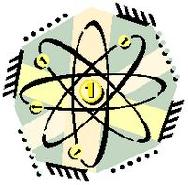
 |
|
| Financial Terms | |
| Plant and Equipment |
|
Information about financial, finance, business, accounting, payroll, inventory, investment, money, inventory control, stock trading, financial advisor, tax advisor, credit.
Main Page: money, finance, inventory control, financial advisor, credit, tax advisor, business, investment, |
Definition of Plant and Equipment
Plant and EquipmentBuildings and machines that firms use to produce output.
Related Terms:property, plant, and equipmentThis label is generally used in financial Property, plant, and equipmentThis item is comprised of all types of fixed assets Depreciation tax shieldThe value of the tax write-off on depreciation of plant and equipment. Foreign direct investment (FDI)The acquisition abroad of physical assets such as plant and equipment, with Salvage valueScrap value of plant and equipment. MACRS (Modified Accelerated Cost Recovery System)A depreciation method created by the IRS under the Tax Reform Act of 1986. Companies must use it to depreciate all plant and equipment assets installed after December 31, 1986 (for tax purposes). committed costa cost related either to the long-term investment  DepreciationAmortization of fixed assets, such as plant and equipment, so as to allocate the cost over their depreciable life. Equipment trust certificatesCertificates issued by a trust that was formed to purchase an asset and lease it PROPERTY AND EQUIPMENTAssets such as land, buildings, machinery, and equipment that the business will use for several EquipmentThe cost of equipment owned by the company. Interplant transferThe movement of inventory from one company location to Capital expendituresAmount used during a particular period to acquire or improve long-term assets such as Fixed assetLong-lived property owned by a firm that is used by a firm in the production of its income. DepreciationA technique by which a company recovers the high cost of its plant-and-equipment assets gradually during the number of years they’ll be used in the business. Depreciation can be physical, technological, or both. accumulated depreciationA contra, or offset, account that is coupled fixed assetsAn informal term that refers to the variety of long-term operating capital budgetmanagement’s plan for investments in longterm Capital StockThe total amount of plant, equipment, and other physical capital. CapitalExpenditures Purchases of productive long-lived assets, in particular, items of property, DepreciationThe systematic and rational allocation of the cost of property, plant, and equipment Company AcquisitionsAssets acquired to create money. May include plant, machinery and equipment, shares of another company etc. Fixed AssetsLand, buildings, plant, equipment, and other assets acquired for carrying on the business of a company with a life exceeding one year. Normally expressed in financial accounts at cost, less accumulated depreciation. Related to : financial, finance, business, accounting, payroll, inventory, investment, money, inventory control, stock trading, financial advisor, tax advisor, credit. |